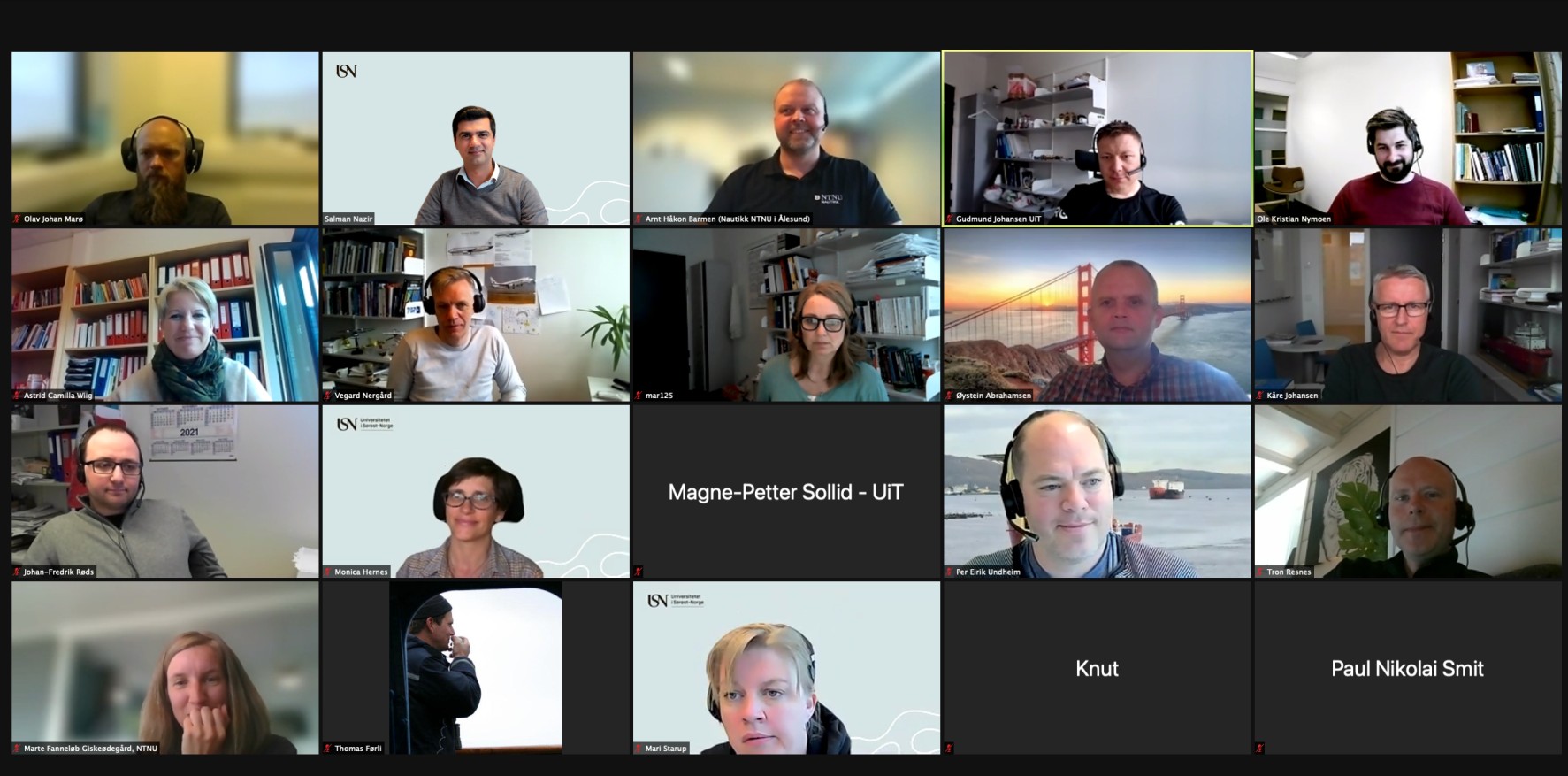By Camilla Wiig, Pedagogical advisor in COAST
“Since we had to reduce the number of students in the simulators, students had to do all the tasks by themselves instead of sharing and observing others. The consequences were more realistic learning activities, extra volume training and better results on practical exam” – simulator instructor Øystein Abrahamsen from HVL
On May 19th, the instructors from the COAST consortium virtually gathered on a discussion forum on Innovative practices and lessons learned during the current pandemic; the idea was to share and learn from the instructors’ simulator practices across the four institutions (HVL, USN, NTNU, and UiT). This COAST initiative is envisaged to provide a much-needed platform for instructors to come together and discuss their experiences with maritime simulator practices as well as with teaching.
Video-recorded briefings at UiT
“At UiT we experienced that smaller groups of students made it easier for us to guide and supervise because they were more visible and couldn’t hide in a larger crowd of eager students”, said Gudmund Johansen
At Zoom and Teams meetings the students were more passive, quiet and struggled to participate in the discussions. So, as instructors, we discussed how we often had to “drag answers” out of the students and decided to change some of the activities we normally have in whole-class teaching. For instance, usually, instructors give whole-class introductions of the exercises students are going to perform in the simulators. But, since the students became a silent audience at Zoom with no questions or engagement, we started to video-record the exercise descriptions and uploaded videos of how we as experts would perform different tasks to explicate laws and regulations in maritime navigation. These videos became available in our Canvas system and we discovered that they were downloaded 24/7 and watched more than 50 times! They became very popular among our students, because as students said; we could watch them whenever and as many times as we wanted. Also, some students said that since they repeatedly could watch the videos, they were able to grasp more details, instead of listening only one time to the teacher’s whole-class instruction. This change in our instruction has made students better prepared before the simulation activities at the campus. Student representatives told us that some students watched the video-recorded exercises 5-6 times before they came to campus to train with us in the simulator-park. So, said Gudmund, this is something we will continue to do and we have decided to make more video descriptions available for the students for preparations and repetition before simulator exercises and certifications.
Measured practices at NTNU
“At NTNU Ålesund we had to close down campus from March 15th and the on-campus simulator teaching became a challange” – nautical instructor Arnt Håkon Barmen
The consequences were that students could not train outside of scheduled lectures and the Simulator Student Assistants (SSA) could no¨ longer offer a 24/7 open simulator-park for individual training and support. Only pre-planned exercises with instructors were held. Still, we decided that we wanted to gather the students regularly and organized online exercises every Friday with great success. When students came back to Campus, we made “waiting zones” with antibac, social distancing and only 10 students in each cohort. All students completed exams, but we experienced that we offered reduced simulator training and support by SSA’s during this pandemic.
Cloud simulations at USN
“At USN we also had to close down all simulator-activities several times” – Program coordinator and nautical instructor Ole Kristian Nymoen
One of our innovative experiences was that our cloud-based simulators in navigation were tested earlier than planned. Since students could not meet at Campus, cloud-based simulations were made available for some groups of students. It means that they could participate in simulated exercises at home. The pilot gave us some important knowledge of the need to let students get to know the technological tool before the simulated activities, and that students’ digital equipment at home is limited. For instance, server capacity and two screens are almost a prerequisite for running cloud-based simulations effectively.
Nevertheless, there was no infection reported among students or teachers of the maritime cohort during the pandemic.
“The closed simulator facilities at campus made us creative and forced us to make use of existing tools, make new tasks and to discover some existing services and features in new ways. These experiences made us more critical, aware of what works better digitally, and what works only in physical interactions among professional instructors and our students at campus”, concluded Gudmund Johansen from UiT.
